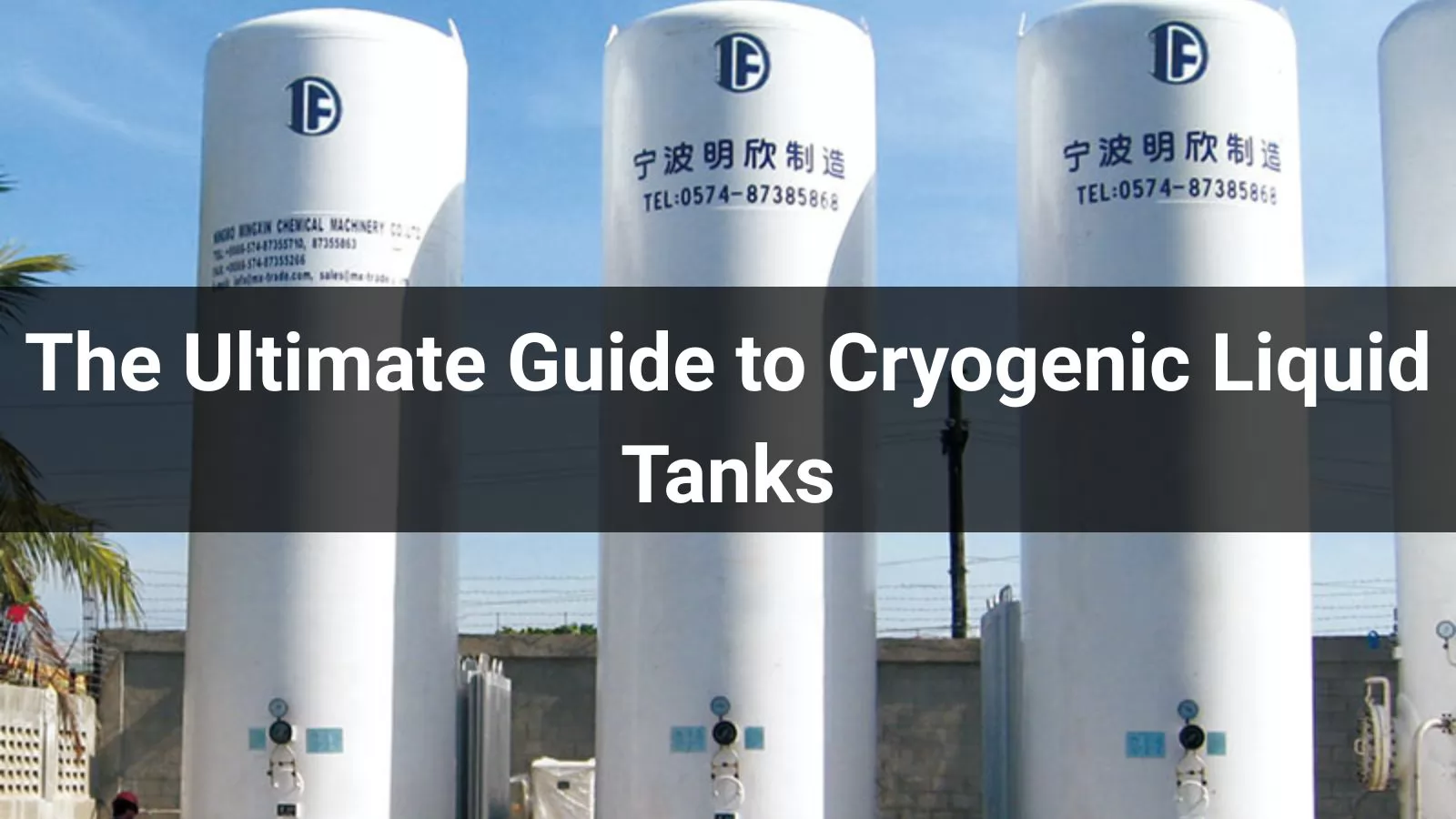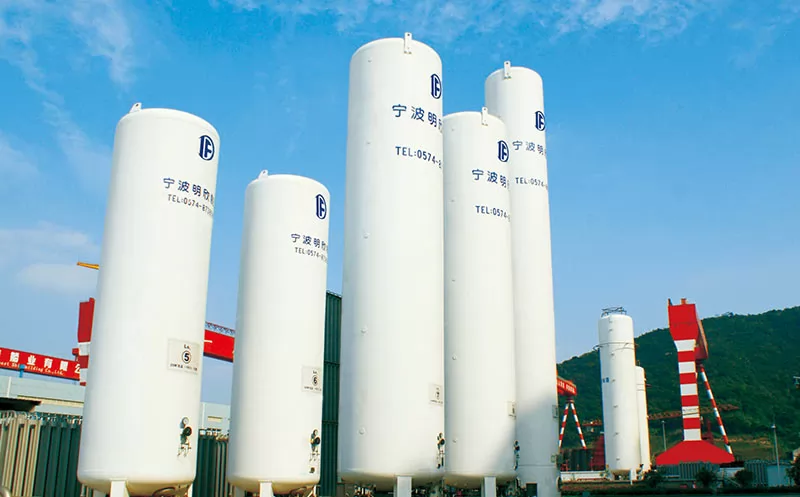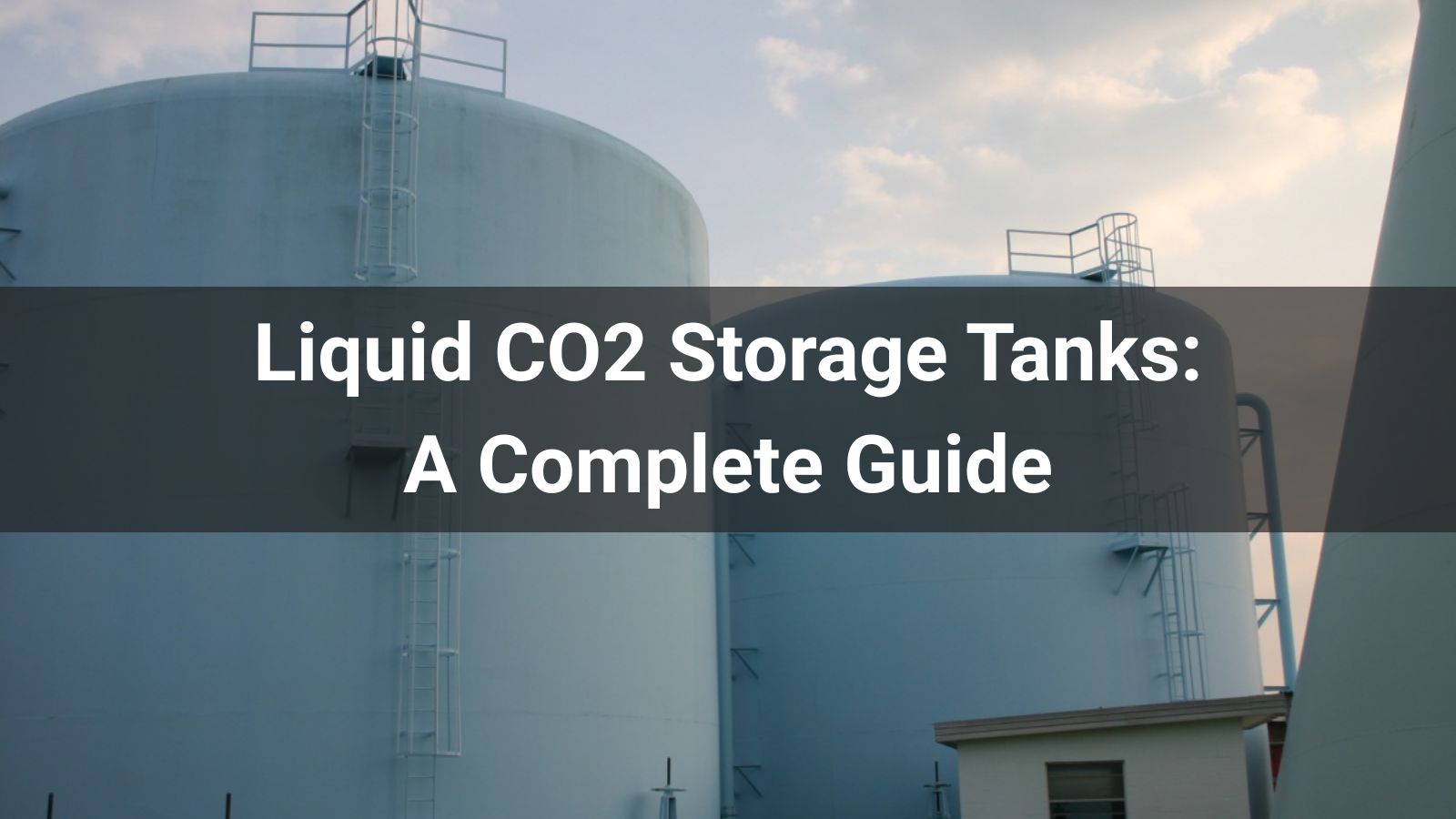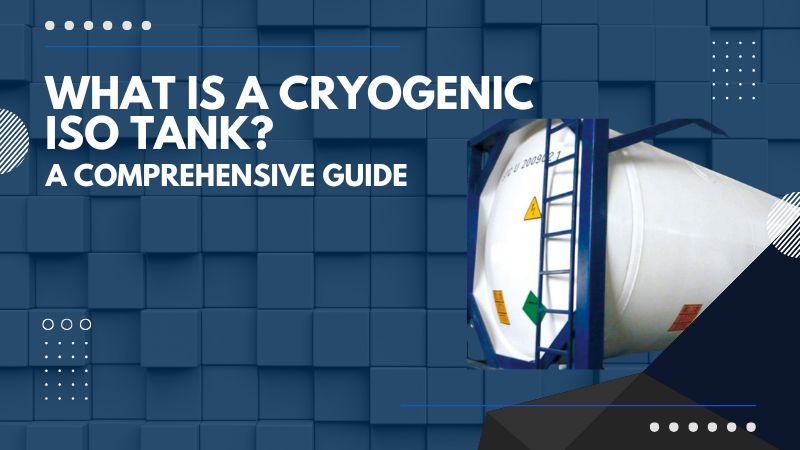The Ultimate Guide to Cryogenic Liquid Tanks

Table of Contents
A **cryogenic liquid tank** is an indispensable piece of equipment in modern industries, healthcare, and research. These specialized vessels are widely used for storing and transporting substances that remain liquid only at extremely low temperatures, such as liquid oxygen, liquid nitrogen, liquid argon, liquefied natural gas (LNG), and liquid hydrogen.
This comprehensive guide will delve into every aspect of **cryogenic liquid tanks**, helping you gain a complete understanding and make informed decisions.
What are Cryogenic Liquid Tanks? Unveiling Their Working Principles
To truly understand a **cryogenic liquid tank**, we first need to define "cryogenic liquids" and the fundamental purpose of these specialized containers. Cryogenic liquids are liquefied gases with boiling points below −150 ∘ C ( −238 ∘ F ), such as liquid oxygen (boiling point −183 ∘ C), liquid nitrogen (boiling point −196 ∘ C), and liquid argon (boiling point −186 ∘ C)
Structure and Components
A typical **cryogenic liquid tank** is ingeniously designed to maintain its contents at ultra-low temperatures. Key components include:
-
Inner Vessel: Made from materials like stainless steel or aluminum alloys, it holds the cryogenic liquid.
-
Outer Jacket: The external shell that encloses the inner vessel.
-
Insulation System: Crucial for minimizing heat transfer. This typically involves a vacuum between the inner and outer vessels, often combined with multi-layer insulation (MLI) to create a highly effective thermal barrier.
-
Pressure Build-up System: Uses heat exchangers to vaporize a small amount of liquid, increasing pressure within the tank to facilitate liquid withdrawal.
-
Safety Relief Devices: Such as safety valves and rupture discs, essential for preventing over-pressurization.
-
Instrumentation: Including pressure gauges, liquid level indicators, and temperature sensors for monitoring the tank's conditions.
How Cryogenic Tanks Work: Minimizing Heat Leak
The core principle behind a **cryogenic liquid tank** is to minimize heat ingress from the ambient environment, thereby preserving the ultra-low temperature of the stored liquid. This is primarily achieved through:
-
Vacuum Insulation: A near-perfect vacuum between the inner and outer vessels eliminates heat transfer by conduction and convection.
-
Multi-Layer Insulation (MLI): Multiple reflective layers, often super-insulation, are used within the vacuum space to block radiant heat transfer.
Despite robust insulation, some heat inevitably enters, causing a small portion of the liquid to vaporize. This phenomenon is known as the **boil-off rate (BOR)**, a critical performance indicator for any **cryogenic liquid tank**. A lower boil-off rate signifies superior insulation and greater efficiency in maintaining the cryogenic state.
Types of Cryogenic Liquid Tanks & Their Diverse Applications
**Cryogenic liquid tanks** come in various configurations, each suited for specific needs and applications. Understanding these types is crucial for selecting the right equipment.
Classification of Cryogenic Tanks
-
Vertical vs. Horizontal Tanks:
-
Vertical Tanks: Ideal for sites with limited footprint, often used for static storage.
-
Horizontal Tanks: Offer better stability due to a lower center of gravity, sometimes preferred for transportable designs or specific site layouts.
-
Stationary vs. Mobile Tanks:
-
Stationary Tanks: Permanently installed at industrial facilities, hospitals, or gas plants for continuous supply.
-
Mobile Tanks (Cryogenic Tankers/ISO Tank Containers): Designed for the safe and efficient transport of large volumes of cryogenic liquids over long distances.
-
Pressure Ratings: Tanks are designed for various pressure ranges depending on the specific cryogenic liquid and withdrawal requirements.
-
Capacity Range: From small laboratory dewars (a few liters) to massive industrial storage tanks (hundreds of cubic meters) for bulk storage.
Common Cryogenic Liquids Stored
**Cryogenic liquid tanks** are engineered to safely contain a variety of substances, each with unique characteristics:
-
Liquid Oxygen (LOX): Widely used in steelmaking, chemical processes, and medical applications.
-
Liquid Nitrogen (LIN): Essential for various industrial processes, medical cryopreservation, and laboratory research.
-
Liquid Argon (LAR): Used in welding, steel production, and specialized lighting.
-
Liquefied Natural Gas (LNG): A key energy source for power generation, heating, and vehicle fuel.
-
Liquid Carbon Dioxide (LCO2): Employed in food freezing, beverage carbonation, and fire suppression.
-
Liquid Hydrogen (LH2): An emerging clean energy carrier and rocket propellant.
Diverse Applications Across Industries
The utility of **cryogenic liquid tanks** spans numerous sectors, driving innovation and efficiency:
-
Industrial Gas Supply: Providing essential gases for welding, metal fabrication, chemical manufacturing, and more.
-
Healthcare & Medical: Supplying oxygen to hospitals, cryopreservation of biological samples (sperm, egg, stem cell banks), and vaccine storage.
-
Energy Sector: LNG receiving terminals, fueling stations, and peak-shaving power plants.
-
Aerospace: As propellants for rockets and spacecraft.
-
Research & Laboratories: For superconductivity experiments, cryogenic physics research, and maintaining low-temperature environments.
-
Food & Beverage: For flash freezing, food preservation, and carbonation processes.
How to Choose the Right Cryogenic Liquid Tank for Your Needs: A Pre-Purchase Guide!

Selecting the optimal **cryogenic liquid tank** requires careful consideration of various factors to ensure it meets your operational demands and safety standards.
Defining Your Requirements
Before making a purchase, clearly define your needs:
-
Type of Stored Medium: Different cryogenic liquids may require specific tank materials, pressure ratings, and safety features.
-
Required Capacity: Determine this based on your average daily consumption, replenishment frequency, and desired safety stock.
-
Use Environment: Consider indoor/outdoor installation, ambient temperature, humidity, and altitude.
-
Flow Rate & Pressure Needs: These dictate the design of the pressure build-up system and associated piping.
-
Mobility Requirements: Do you need a stationary tank or a mobile solution for transport?
-
Budget: Balance initial investment with long-term operational costs, including boil-off losses.
Key Technical Parameters to Consider
Evaluate these technical specifications to ensure optimal performance and safety:
-
Insulation Performance (Boil-off Rate - BOR): A lower BOR indicates superior insulation and reduced product loss, leading to lower operating costs.
-
Material Selection: Common materials include 304 stainless steel or specific aluminum alloys, chosen for their cryogenic properties and corrosion resistance.
-
Design Standards & Certifications: Verify compliance with international (e.g., ASME, PED) and national standards (e.g., GB in China) to ensure product quality and safety.
-
Safety Protection Systems: Ensure the tank is equipped with robust safety valves, rupture discs, pressure gauges, liquid level indicators, and emergency shut-off valves.
-
Pressure Building System: Evaluate whether an internal or external pressure builder is suitable for your desired flow rates.
-
Service Life & Maintenance: Inquire about the manufacturer's warranty, recommended maintenance schedule, and expected lifespan.
Evaluating Potential Suppliers
Choosing a reputable supplier is as important as choosing the tank itself:
-
Qualifications & Experience: Opt for manufacturers with proven track records and relevant certifications.
-
Technical Support & After-Sales Service: Assess their capabilities for installation, commissioning, training, and ongoing maintenance.
-
Case Studies & Reputation: Review testimonials, past projects, and industry reputation.
-
Customization Capabilities: Can they tailor solutions to your specific, unique requirements?
Our Featured Cryogenic Liquid Storage Tanks
At [Your Company Name, e.g., Cryogenic Tank Solutions], we specialize in providing high-quality, reliable **cryogenic liquid storage tanks** designed to meet diverse industrial and commercial needs. Our product range encompasses various capacities and specifications, ensuring you find the perfect fit for your specific cryogenic storage requirements.
Key Features of Our Cryogenic Tanks:
-
Superior Vacuum & Multi-Layer Insulation: Engineered for minimal boil-off rates, ensuring long-term storage efficiency and cost savings.
-
Robust Construction: Utilizing high-grade stainless steel or specialized alloys for exceptional durability and adherence to international safety standards.
-
Advanced Safety Systems: Equipped with multiple layers of safety features, including certified relief valves and rupture discs, to ensure secure operation.
-
Versatile Applications: Ideal for storing a wide array of cryogenic liquids, including Liquid Oxygen (LOX), Liquid Nitrogen (LIN), Liquid Argon (LAR), and Liquefied Natural Gas (LNG).
-
Customizable Solutions: We offer tailored designs to match unique pressure, capacity, and environmental specifications.
Whether you need a **compact cryogenic liquid tank** for laboratory use or a large-scale industrial storage solution, we have the expertise and products to support your operations. Discover our full range of **cryogenic liquid storage tanks** and find the ideal solution for your business by visiting our dedicated product page: Explore Our Cryogenic Liquid Storage Tanks.
Safe Operation and Maintenance of Cryogenic Liquid Tanks
Ensuring the safe operation and proper maintenance of a **cryogenic liquid tank** is paramount to prevent accidents, extend equipment lifespan, and ensure efficient operation.
Safety Operation Guidelines
-
Personal Protective Equipment (PPE): Always wear cryogenic gloves, safety glasses, and appropriate protective clothing when handling cryogenic liquids or working near tanks.
-
Ventilation: Ensure adequate ventilation in areas where tanks are stored to prevent oxygen depletion or the accumulation of flammable gases.
-
Pressure Management: Strictly monitor and control internal pressure, never exceeding the tank's maximum allowable working pressure (MAWP).
-
Avoid Contact: Prevent direct skin contact with cryogenic liquids or extremely cold surfaces to avoid severe frostbite.
-
Emergency Procedures: Familiarize yourself with emergency protocols for leaks, fires, or other incidents.
Routine Maintenance and Inspections
-
Regular Gauge Checks: Periodically verify that pressure gauges and liquid level indicators are functioning correctly.
-
Safety Valve Checks: Ensure safety relief valves are within their calibration validity period and are regularly tested as per regulations.
-
Insulation Integrity: Inspect the outer jacket for signs of damage, excessive frost build-up, or sweating, which could indicate insulation degradation.
-
Leak Detection: Regularly check all piping, valves, and connections for any signs of leakage.
-
External Cleaning: Keep the tank exterior clean and free from debris.
Troubleshooting & Common Issues
Here are some common issues you might encounter with a **cryogenic liquid tank** and potential solutions:
-
High Boil-off Rate: May indicate a compromised vacuum or insulation. Consult a qualified technician for inspection and repair.
-
Abnormal Pressure Fluctuations: Could be due to faulty pressure build-up systems, valve issues, or external heat input.
Conclusion & Future Outlook
**Cryogenic liquid tanks** are fundamental to countless modern processes, enabling the safe and efficient storage and transport of essential cryogenic gases. From healthcare to energy and advanced manufacturing, their role is expanding.
Looking ahead, the **cryogenic liquid tank** industry is set to evolve further with advancements in liquid hydrogen storage and transport, development of more compact and integrated designs, and the integration of smart monitoring and control systems for enhanced safety and efficiency.
Frequently Asked Questions (FAQ)
Here are some common questions about **cryogenic liquid tanks**:
-
Q1: What does "boil-off rate" mean for a cryogenic liquid tank, and how is it calculated?
A1: The boil-off rate (BOR) refers to the percentage of the stored cryogenic liquid that vaporizes per day due to heat ingress. It's typically calculated as (volume lost per day / total stored volume) * 100%. A lower BOR indicates better insulation efficiency.
-
Q2: What is the typical lifespan of a cryogenic liquid tank?
A2: With proper maintenance and regular inspections, a well-manufactured cryogenic liquid tank can have a service life of 20 to 30 years or even longer.
-
Q3: Do cryogenic liquid tanks require regular inspections? What are the common inspection items?
A3: Yes, regular inspections are crucial. Common items include pressure vessel integrity checks, safety valve calibration, vacuum integrity tests, insulation performance assessment, and leak detection.
-
Q4: Do different cryogenic liquids require different types of tanks?
A4: While the fundamental design is similar, specific materials (e.g., for LNG or LH2), pressure ratings, and safety features may vary to suit the chemical properties and storage conditions of different cryogenic liquids.
-
Q5: Are there special installation requirements for cryogenic liquid tanks?
A5: Yes, installation typically requires a level concrete pad, adequate ventilation, proper grounding, and adherence to local building codes and safety regulations, often including specific distances from other structures.
Need a Custom Cryogenic Liquid Storage Solution?
Our experts are ready to help you select or design the perfect **cryogenic liquid tank** to meet your precise requirements. Learn more about our comprehensive solutions and capabilities by visiting our main website: www.cryogenictank.com.











![Top 10 LNG Tank Manufacturers Worldwide[2025 Updated]](/statics/images/right.png)
![Top 10 LNG Tank Manufacturers Worldwide[2025 Updated]](/uploads/202506/CryoTech-banner-1-_1750490922_WNo_800d450.jpg)



